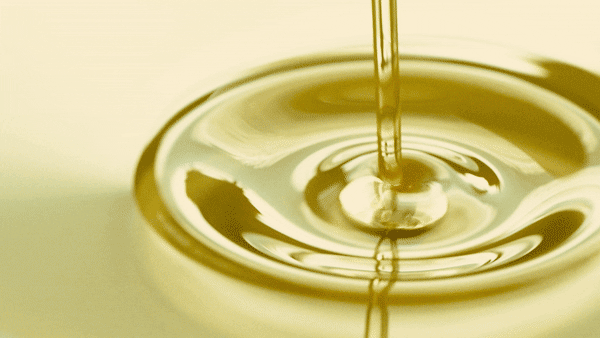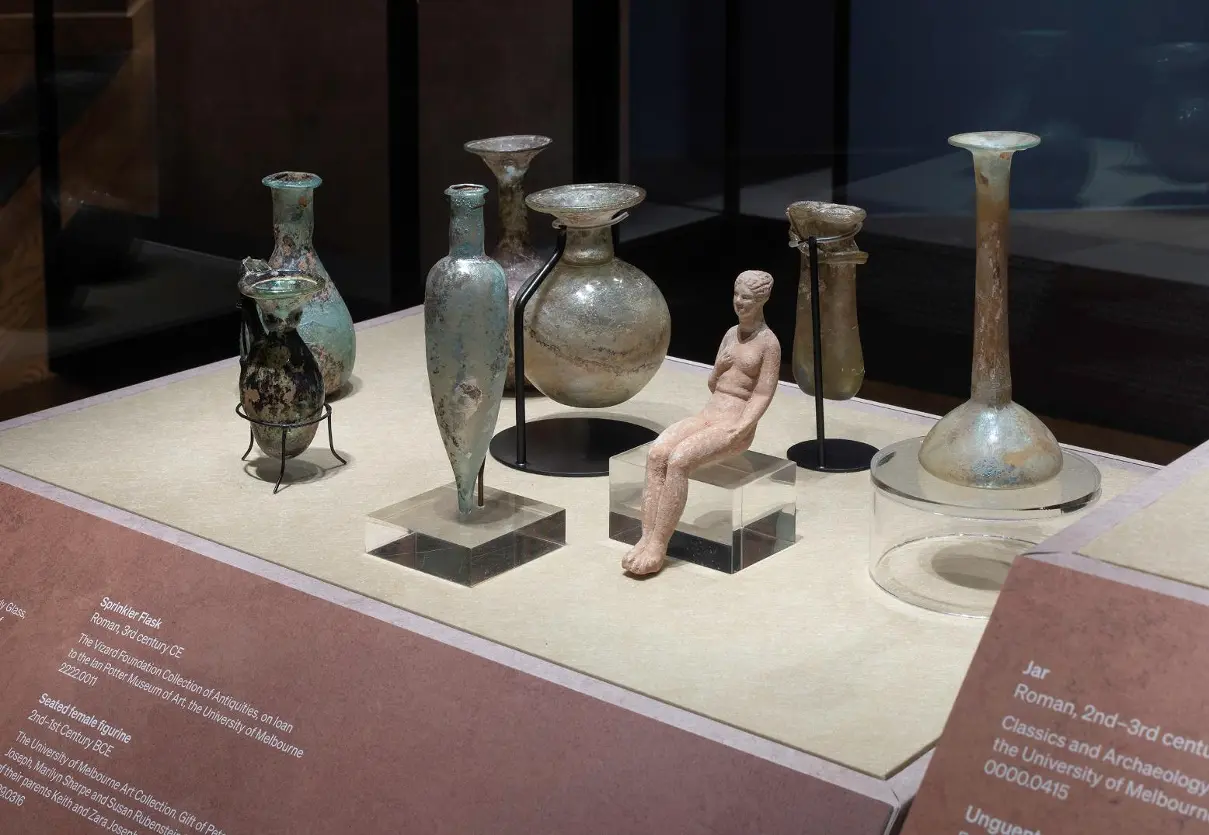
Environment
Discovered: The Drowned Apostles

Olive oil is liquid gold. It’s been precious to humans for almost eight thousand years – used in everything from birth to death
Published 13 September 2024
According to ancient Greek legend, the origins of the olive tree lie in a competition between the god Poseidon and goddess Athena for possession of Athens.
Zeus appointed the twelve gods as judges and when Athena planted the first olive tree - while Poseidon produced a salt spring with a blow of his trident – the judges awarded the city to Athena.
Myth aside, the cultivation of olives has special significance in the history of human civilisation.
But how did the making of olive oil begin?
Through archaeology, we can gain insight into whether humans first made olive oil or pickled olives for eating – as well as where and when this happened.
So far, the oldest archaeological evidence for olive oil making has been found in the Neolithic village of Kfar Samir, off the coast of modern-day Israel.
Kfar Samir was inhabited around 7600-7000 BP (Before Present, roughly equivalent to 5600 to 5000 BCE), but as sea levels rose at the end of the Ice Age, it was lost to the waters of the Mediterranean.

Environment
Discovered: The Drowned Apostles
But this submersion also meant the remains of the village were sealed in anaerobic conditions under a protective cover of marine sand.
Underwater archaeologists have found crushing basins, a pit filled with crushed olive waste and a straining basket which indicate the production of oil.
The earliest evidence for pickling olives is at another submerged site, the nearby Hishuley Carmel, where whole pits in stone basins were found, indicating that the olives were pickled in these basins, not crushed.
This village site dates to around 500 years later than Kfar Samir. So, based on the archaeological record, it seems that making oil came first.
1 / 4
However, the oil and pickled olives from these Neolithic sites were probably made from wild olives.
One of our main sources of evidence for establishing when people first domesticated and cultivated olive trees is the presence of wood and pollen from olive trees outside the natural range of the wild plant.
Increasing pollen levels show us the slow spread of olive cultivation over several thousand years.
By the first millennium BCE, oil was extensively produced and traded across the Mediterranean.
In Homer’s epic poem, The Odyssey, olive oil appears in the treasure room of the hero’s palace at Ithaka, where “gold and bronze lay heaped up upon the floor” and “there was a store of fragrant olive oil”.
By the Roman period, olive oil was a major part of diet, farming, trade and daily life throughout the Empire.
Methods of extracting liquid gold from olives changed little over thousands of years, even up to the 20th century.
The first step is to crush the olives with stones or in a stone mill. Crushed olives can then be pressed to extract more oil.
Ancient Egyptian tomb paintings depict wine extraction using twisted sacks, a simple but effective method also used to squeeze oil from crushed olives up into the twentieth century.
Huge, heavy machines with long beams of wood and massive weight-stones were used for larger scale production from the Bronze Age onwards.
Nineteenth century European travellers seeing the impressive remains of Roman period stone presses in Tunisia mistook them for temple entrances.
The final step in extracting olive oil is separating it from the thick brownish lees (vegetable water).
Even this by-product was not wasted.
It was used by the ancients as an insecticide for buildings, plants and animals; for waterproofing; as fertiliser; and as grease for machinery and leather. The crushed pips were also used as a valuable fuel.
Olive oil was ubiquitous in the ancient diet at least from the mid-first millennium BCE.

Arts & Culture
A pressing matter: Ancient Roman food technology
It’s been found, still in its glass bottle, in the ruins of the city of Pompeii, which was destroyed by the eruption of Vesuvius in 79 CE.
Recent isotopic analysis of the bones of working people in the nearby town of Herculaneum suggests a very high consumption of olive oil, probably around 20 litres per person per year (around 55 millilitres and about 450 calories per day).
Oil was used universally in cooking, even for desserts. But it served many purposes in the ancient world.
It was the main source of lighting, burned in small clay or bronze lamps.
1 / 4
Roman wall paintings on black backgrounds, like those recently discovered at Pompeii must have shimmered in the dim light.
With the advent of Christianity, oil for church lighting became extremely important. While earlier pagan temples were dimly lit, and entered only by priests and priestesses, churches were for a whole congregation and lit brightly even at night.
Oil was also used for cleaning the body instead of soap.
The Roman writer Pliny the Elder wrote: “There are two liquids that are especially agreeable to the human body, wine inside and oil outside, … but oil is an absolute necessity.”

Arts & Culture
Beauty, wine and death in the ancient world
The ancient medical writer Soranus describes how a newborn baby should be anointed and its mouth cleaned with lukewarm olive oil by the midwife, before being gently washed with tepid water.
Oil was also an important component of medical ointments. It was included in hair dyes – blended with earthworms’ ash – or mixed with chicken or pigeon dung as a cure for ulcerations. Modern scientific studies suggest that olive oil can indeed have antimicrobial properties.
Ancient perfumes were made using olive oil steeped with fragrant substances like roses, iris, myrrh or cinnamon.
In Bronze Age Greece, perfume made from oil and coriander was produced and distributed within palaces, which must have not only looked magnificent, but also had a distinctive scent.
Explore a 13th century BCE Mycenaean oil jar of the type probably used to store perfumes. Picture: The University of Melbourne Art Collection/ 3D photogrammetry: Thomas J. Keep
And by the Classical period, perfume was widely made and used by the wealthy classes – both men and women. Ingredients for the most expensive perfumes were imported from as far away as Arabia and India.
Olive oil has also played an important role in ritual for thousands of years.
In the Hebrew scriptures, God tells Moses to anoint the ark of the covenant and priests with oil scented with myrrh and cinnamon “blended as by the perfumer”.
Such oil was later used to anoint kings, a ritual continued through the Middle Ages to the coronation of King Charles III in 2023.

Arts & Culture
Happy ancient Roman Mother’s Day
From the Bronze Age to Classical Greece, scented oil was used as an offering to the gods, and to anoint clothes for religious festivals and sacrificial animals.
Used to bathe the corpse or placed in the tomb, it played a part in end-of-life rituals.
Using molecular analysis, archaeological investigations of ancient Roman tombs have shown that oil infused with cinnamon, pine resin, frankincense or myrrh was poured over the body before cremation or burial in a sarcophagus.
In the 21st century, we still use olive oil for many of the same purposes it has served over the past seven and a half thousand years.

From cafe kitchens to the anointing of King Charles at his coronation, this ancient tree still yields its precious golden harvest for our health and delight.
Surely those twelve gods made a wise choice in selecting the creator of the olive tree as the winner of the competition for Athens.
The Ancient Lives: Insights from the Classics and Archaeology Collection exhibition is open 10am - 5pm weekdays until early November, 2024.